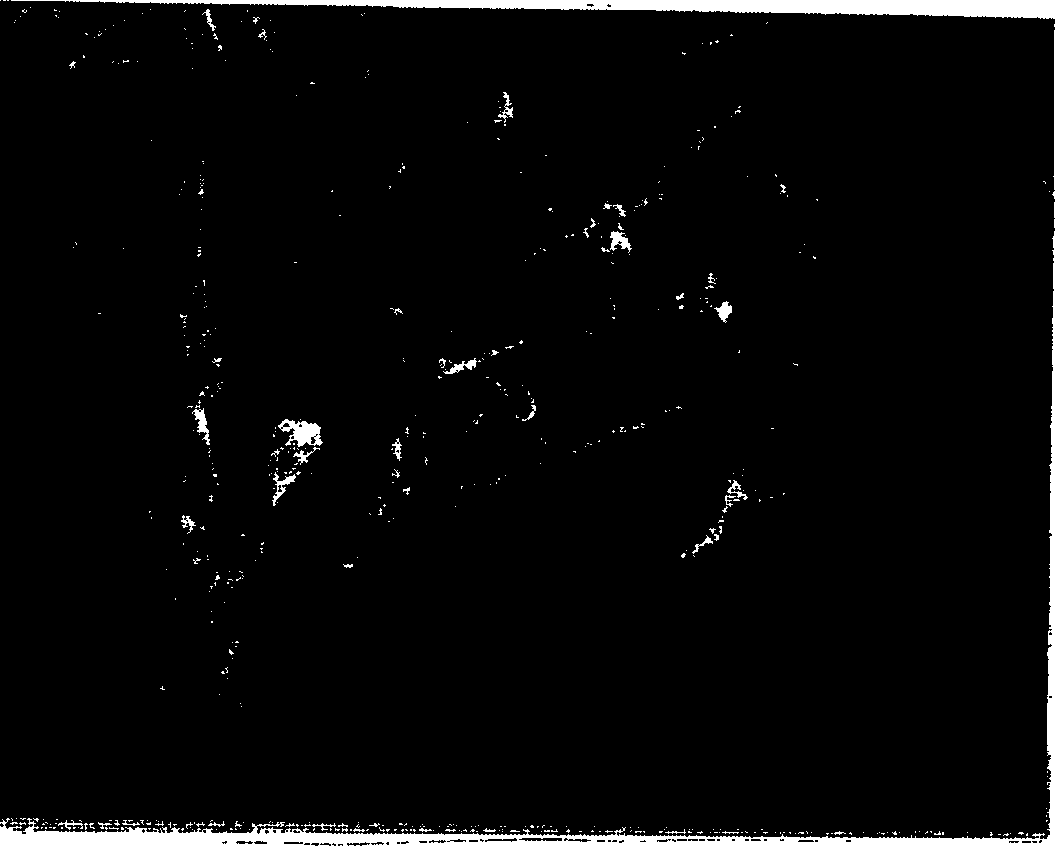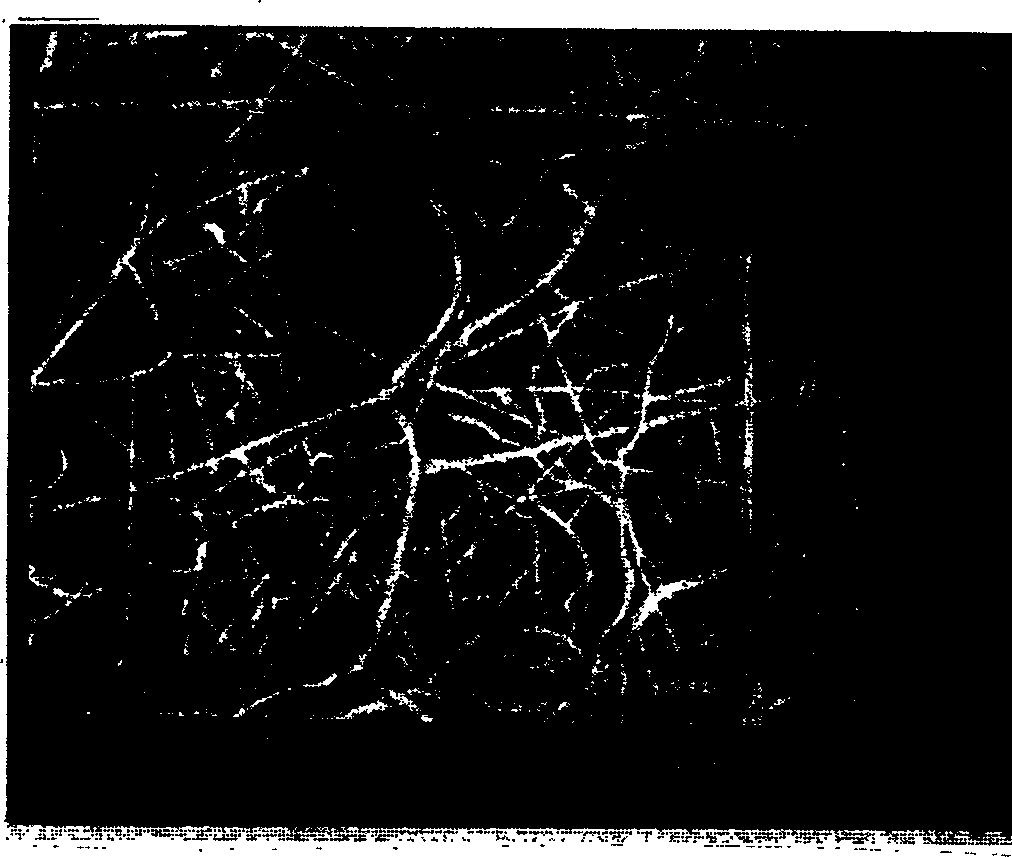Porous materials functionalized by vacuum deposition
A porous material and functional technology, applied in vacuum evaporation plating, metal material coating process, paper coating, etc., can solve the problem of aggravating pore blockage
- Summary
- Abstract
- Description
- Claims
- Application Information
AI Technical Summary
Problems solved by technology
Method used
Image
Examples
example 1
[0040] Example 1 - Hydrophobic / oleophobic coating
[0041] A functionalized melt-blown polypropylene nonwoven fabric was coated with a hydrophobic / oleophobic fluorinated acrylate polymer to create a repellent surface. The monomer was flashed at about 100 mTorr. The fabric is pretreated in a plasma field and exposed to monomer vapor for condensation within one second while traveling at a speed of approximately 50 m / min. The condensed monomer layer is cured in-line by electron beam irradiation within 100 milliseconds. An approximately 0.1 μm thick polymer coating was produced from the run and was found to provide sufficient repellency to water and oil with a surface energy of approximately 27 dynes / cm. The functionalized fabric repels both water-based and oil-based fluids while substantially maintaining the original permeability of the fabric. The material of the coating exhibits high performance as an electrostatically charged filter medium. The same coating process with th...
example 2
[0045] Example 2 - Hydrophilic coating
[0046] Meltblown polypropylene nonwovens were coated (in a separate test) with films of hydrophilic acrylate polymers functionalized with hydroxyl, carboxyl, sulfate, amino, amido, and ether groups. The monomer was flashed at about 10 mTorr. The fabric is pretreated in a plasma field and exposed to monomer vapor for condensation within one second while traveling at a speed of approximately 30 m / min. The condensed monomer layer is cured in-line by electron beam irradiation within 150 milliseconds. Polymer coatings of about 0.1 [mu]m thick were produced from the runs, which were found to provide sufficient wettability to water in all cases with surface energies of about 70-72 dynes / cm. The functionalized fabric absorbs water while substantially maintaining the original permeability of the fabric. The cladding material exhibits high performance as a water-absorbing medium. The same layup process with the same hydrophilic acrylate monomer...
example 3
[0049] Example 3 - Hydrophobic / oleophobic pigmented coating
[0050] The same experiment as in Example 1 was repeated with 3-5% of an organic dye (such as disperse red) mixed in the fluorinated acrylate monomer. The coating base exhibited the same level of water and oil repellency, measured as approximately 6 and 5, respectively, in the DuPont(R) Teflon(R) repellency test with the color added to the coating. By monitoring the amount of organic dye or the thickness of the coating, the intensity of the color can be controlled.
[0051] Example 4 - Hydrophilic Pigmented Coating
[0052] The same experiment as in Example 2 was repeated with 3-5% of an organic dye (eg malachite green) mixed in a hydrophilic acrylate monomer. The coating base exhibited a pigmented surface with comparable high water absorption.
PUM
| Property | Measurement | Unit |
|---|---|---|
| Thickness | aaaaa | aaaaa |
Abstract
Description
Claims
Application Information
 Login to view more
Login to view more - R&D Engineer
- R&D Manager
- IP Professional
- Industry Leading Data Capabilities
- Powerful AI technology
- Patent DNA Extraction
Browse by: Latest US Patents, China's latest patents, Technical Efficacy Thesaurus, Application Domain, Technology Topic.
© 2024 PatSnap. All rights reserved.Legal|Privacy policy|Modern Slavery Act Transparency Statement|Sitemap



